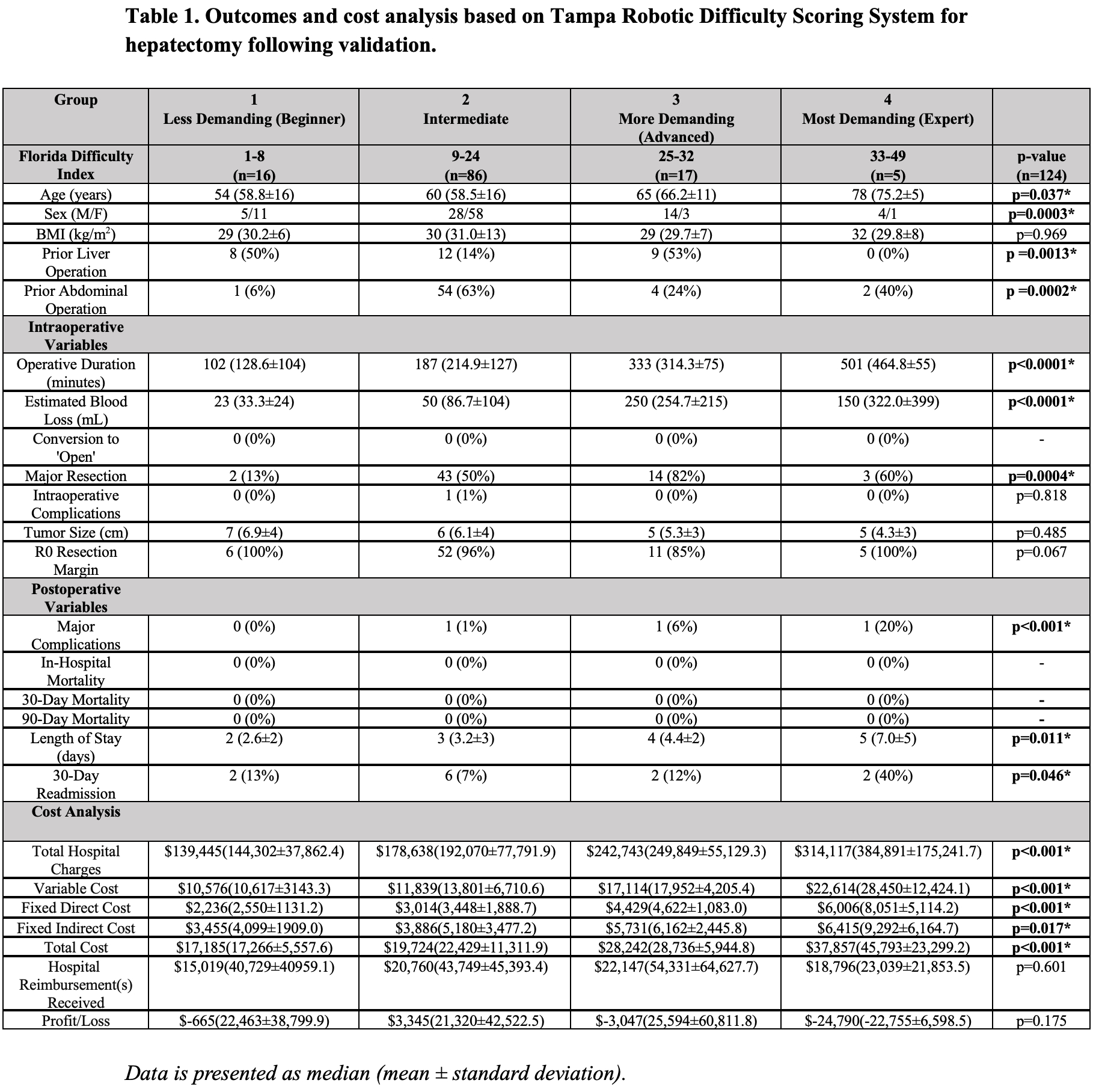Back to 2024 Abstracts
INTERNAL VALIDATION OF THE TAMPA ROBOTIC DIFFICULTY SCORING SYSTEM: REAL-TIME ASSESSMENT OF THE NOVEL ROBOTIC SCORING SYSTEM IN PREDICTING FINANCIAL COSTS OF HEPATECTOMY
Tara M. Pattilachan
*, Sharona Ross, Maria Christodoulou, Iswanto Sucandy
Digestive Health Institute, AdventHealth Tampa, Tampa, FL
Introduction: The robotic approach in hepatectomy is becoming increasingly prevalent, necessitating a dedicated difficulty scoring system tailored for robotic operations. The Tampa Robotic Difficulty Score serves this purpose by offering a novel robotic-specific scoring system designed to enhance preoperative surgical planning and predict potential technical challenges in robotic hepatectomies. Following its conceptualization, we sought to internally validate the Tampa Difficulty Score by correlating it with financial variables based on our recent cohort of patients, extending the score's applicability beyond clinical outcomes to encompass economic or financial factors.
Methods: We retrospectively applied the Tampa Difficulty Score to our latest cohort of 124 patients who underwent robotic hepatectomy. Patients were stratified into four technical difficulty levels: Group 1 (1-8, n=16), Group 2 (9-24, n=86), Group 3 (25-32, n=17), and Group 4 (33-49, n=5). We then examined the association between the groups and various financial metrics, including total hospital charges, variable costs, fixed costs, and hospital reimbursements. A one-way ANOVA was utilized to compare between the groups. Data is presented as median (mean ± standard deviation) for illustrative purposes. Statistical significance was accepted at p≤0.05.
Results: Analysis revealed a significant association between the Tampa Difficulty Score and financial metrics. With an increase in difficulty score, there was a significant increase in total hospital charges (p<0.001), variable costs (p<0.001), and fixed direct (p<0.001) and indirect costs (p=0.017). In contrary, hospital reimbursements did not significantly increase with the procedural complexity, leading to a non-proportionate financial burden on healthcare facilities, particularly seen in the most complex cases (Group 4).
Conclusions: The Tampa Difficulty Score has demonstrated its utility not only in predicting peri-operative clinical outcomes in patients undergoing robotic hepatectomy, but also in projecting the financial impacts of robotic hepatectomy to payors and our tertiary institution. This dual predictive capacity is valuable in preoperative surgical planning, resource allocation, and financial risk assessment. External validation of the Tampa Difficulty Score is an important next step to confirm its effectiveness in other healthcare settings and economic structures.
 Data is presented as median (mean ± standard deviation).
Data is presented as median (mean ± standard deviation).
Back to 2024 Abstracts
